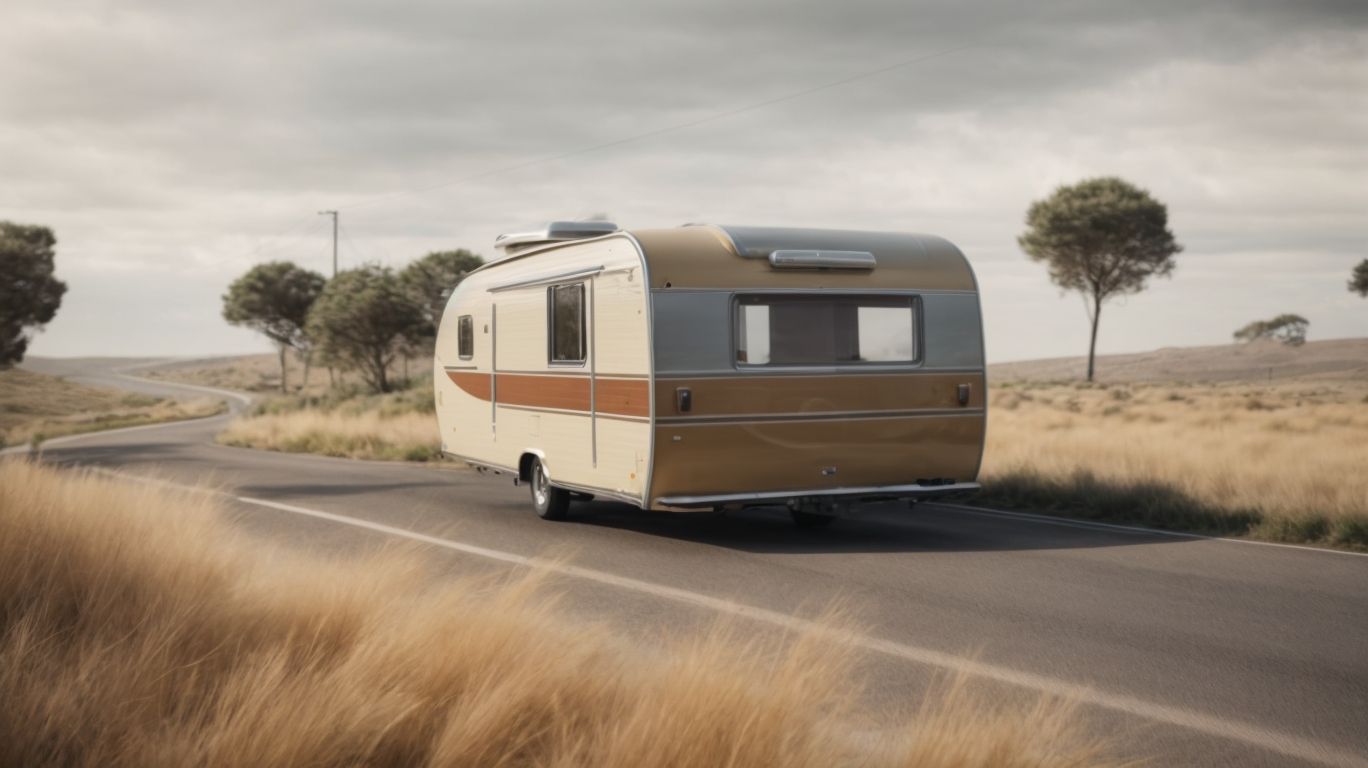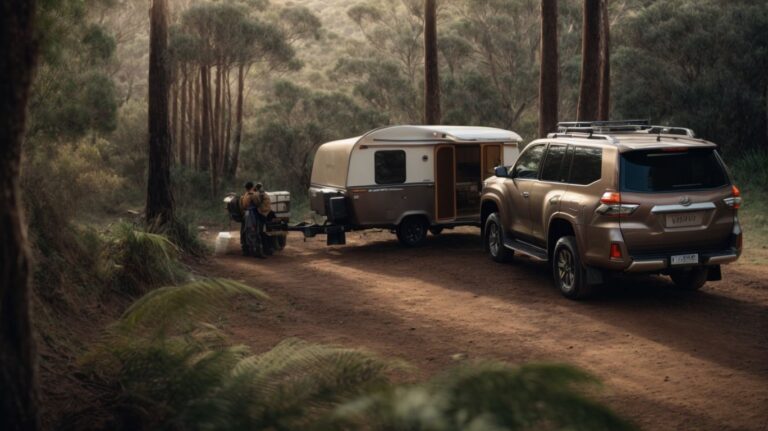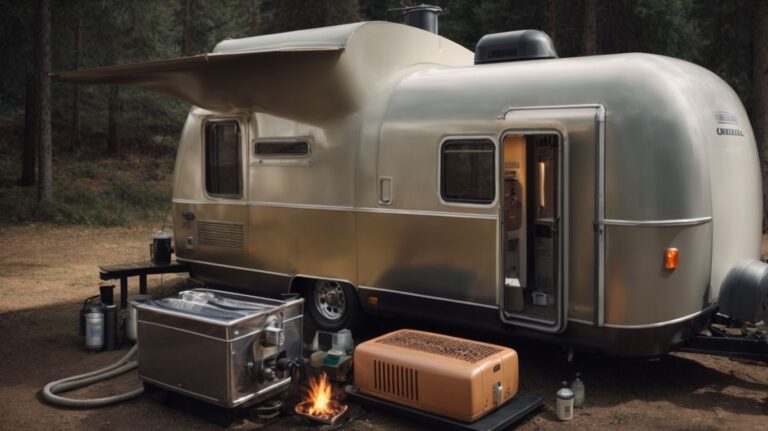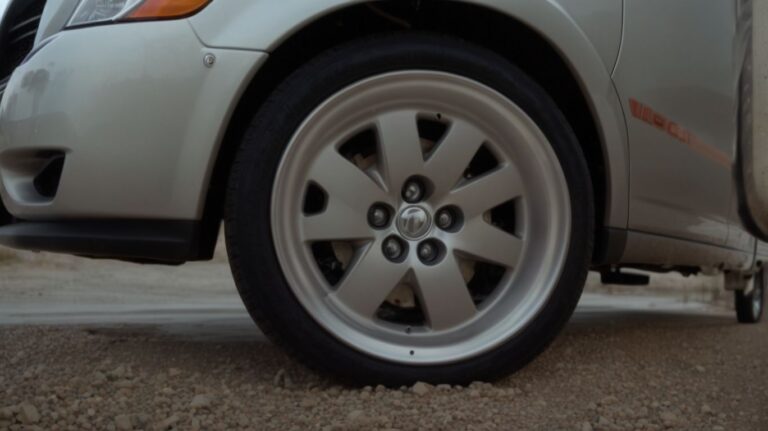Identifying the Causes of Caravan Snaking
Are you a caravan owner looking to avoid the dreaded phenomenon of caravan snaking? Understanding the causes of this dangerous occurrence is key to preventing it. From inadequate weight distribution to incorrect tyre pressure, there are several factors that can lead to caravan snaking.
In this article, we will delve into the various causes of caravan snaking and provide practical tips on how to prevent it, ensuring a safe and smooth journey every time.
Key Takeaways:
What is Caravan Snaking?
Caravan snaking refers to the dangerous sideways movement of a caravan while being towed behind a vehicle.
Caravan snaking poses a significant threat to the safety of both the drivers and other road users. The risks associated with this phenomenon include loss of control, rollovers, and potential accidents. It can be caused by various factors, such as improper weight distribution within the caravan, sudden crosswinds, inadequate tire pressure, or incorrect hitching techniques.
Preventing caravan snaking is crucial for ensuring a smooth and safe towing experience. Utilizing proper towing equipment and employing efficient caravan stabilization mechanisms like sway control devices can help minimize the chances of snaking occurrences.
What Causes Caravan Snaking?
Caravan snaking can be caused by various factors including inadequate weight distribution, incorrect tyre pressure, windy conditions, sudden steering movements, excessive speed, and driver inexperience.
One of the key factors contributing to caravan snaking is inadequate weight distribution. When the weight inside the caravan is not evenly distributed, it can cause instability and increase the likelihood of snaking. For example, if too much weight is concentrated towards the back, the caravan may start to sway side to side. To prevent this, drivers should ensure that heavy items are evenly spread out and properly secured.
- Incorrect tyre pressure is another common cause of caravan snaking. When the tyres are underinflated or overinflated, it can affect the handling and stability of the caravan. Proper tyre maintenance, including regularly checking and adjusting the tyre pressure according to the manufacturer’s recommendations, is essential.
- Windy conditions can also exacerbate caravan snaking. Crosswinds, especially on open highways or exposed areas, can push the caravan off course and lead to instability. Drivers should be alert to weather forecasts and adjust their driving accordingly, avoiding high-wind areas if possible.
- Sudden steering movements, such as overcorrections or sharp turns, can trigger caravan snaking. Smooth and gradual steering inputs are crucial to maintaining control and preventing swaying. Drivers should practice gentle maneuvers and anticipate changes in the road ahead.
- Excessive speed is a major factor in caravan snaking. Driving too fast increases the risk of losing control, especially when towing a caravan. Adhering to speed limits and driving at a safe, controlled pace can significantly reduce the chances of snaking incidents.
- Another factor to consider is driver inexperience. Novice drivers or those unfamiliar with towing a caravan may struggle with handling and responding to potential snaking situations. Proper training, practice sessions, and guidance from experienced drivers can help improve awareness and skills.
Inadequate Weight Distribution
Inadequate weight distribution in a caravan can lead to instability and snaking, especially if the noseweight is too low or the pitch is incorrect.
Motion Activated RV Step Lights, 10 LED Battery Operated Motorhome Motion Sensor led Light Strip, Magnetic Night Light Bar for Motorhome Travel,Travel Trailers, Camper (2 Pack)
- 【Infrared Induction Motion Detection】Motion sensor light on the PIR sensor can detect human movement, 10 feet once your approach is detected, the rv step lights will automatically turn on in the dark, in the absence of detected motion or other light sources, 18 seconds after the automatic shutdown, a large degree of power savings and improved durability.
Camco TST MAX RV Toilet Treatment Drop-INs - Control Unwanted Odors & Break Down Waste and Tissue - Safe Septic Tank Treatment - Orange Scent, 30-Pack (41183)
- Toilet Deodorizer With Reactive Odor-Eliminating Technology: Experience a powerful RV odor eliminator that stops RV black tank odors for up to 7 days. Just (1) toilet drop in treats camper toilets with up to a 40-gallon tank.
THANSTAR Collapsible Dish Drying Rack Portable Dinnerware Drainer Organizer for Kitchen RV Campers Travel Trailer Space Saving Kitchen Storage Tray
- 【Food Grade Material】Made from eco-friendly PP+TPR material that is BPA Free and Food-Grade. The flexible material allows the dish strainers for kitchen counter to collapse flat for easy space-saving and storage, making the most of your kitchen countertop.
Camco RhinoFLEX 20-Ft RV Sewer Hose Kit - Features Clear Elbow Fitting w/Removable 4-in-1 Adapter - Connects to 3” Slip or 3”/3.5”/4” NPT Threaded Sewer Connection (39742)
- Superior RV Tank Dumping: Streamline RV holding tank dumping with Camco’s RhinoFLEX 20' Camper Sewer Hose Kit. Built tough & flexible, this all-inclusive RV septic hose system provides simple & effective tank dumping on your camping adventures.
Camco Tastepure RV Water Filter - New & Advanced RV Inline Water Filter with Flexible Hose Protector - GAC & KDF Water Filter - Made in USA - Camping Essentials for Fresh Drinking Water (40043)
- Advanced 6-Step Filtration Technology: Experience the extraordinary power of Hex-Flow Technology & its remarkable 6-step filtration process. Every layer works together to provide you with water that is exceptionally clean.





Proper weight distribution is crucial to ensure a smooth and safe towing experience. Calculating the noseweight is essential; it should typically be around 7-8% of the caravan’s laden weight. Adjusting this weight involves using a specialist gauge on the tow hitch.
Matching the pitch of the outfit is also vital. This means having the caravan running parallel to the road, avoiding being nose-up or nose-down. Uneven weight distribution can cause the caravan to sway dangerously.
To enhance stability, distribute weight evenly throughout the caravan. Place heavier items low and central, securing them to prevent movement. This helps maintain balance and reduces the risk of fishtailing or loss of control on the road.
Incorrect Tyre Pressure
Incorrect tyre pressure in caravans can result in blow-outs and loss of stability, posing a significant safety risk to the vehicle and other road users.
Proper tyre pressure is crucial for maintaining optimal performance and safety while towing a caravan. When the pressure is too low, the tyre flexes more, generating excess heat that can lead to a blow-out. On the other hand, overinflated tyres are prone to uneven wear, reducing traction and stability on the road.
To mitigate these risks, consider using safety bands like Tyron, which can help keep the tyre on the wheel rim in case of a blow-out, preventing a potential disaster.
Windy Conditions
Windy conditions can exacerbate caravan snaking, especially when facing crosswinds that affect the stability of the outfit, necessitating the use of stabilisers and proper weight distribution.
Stabilisers play a crucial role in reducing sway by counteracting the impact of gusty winds on the caravan. Ensuring that weight is evenly distributed both side-to-side and front-to-back helps in maintaining better pitch control, minimizing the risk of swaying in windy conditions.
When encountering strong crosswinds on the road, it is advisable to drive at a moderate speed and keep a firm grip on the steering wheel to maintain control. Maintaining a safe following distance and being prepared to adjust your driving according to the wind direction can help mitigate the effects of wind on caravan towing.
Sudden Steering Movements
Abrupt or sudden steering movements while towing a caravan can lead to loss of control, accidents, and swaying across lanes, posing a danger to both the driver and other road users.





It’s crucial to understand the risks associated with such actions to prevent any mishaps on the road. When towing a caravan, smooth handling techniques become paramount. Make gradual turns and avoid sharp maneuvers to maintain stability. Maintaining proper lane discipline is essential. Stay in your lane, use your mirrors effectively, and signal well in advance when changing lanes.
Speeding
Exceeding speed limits while towing a caravan can compromise safety, increase the risk of accidents, and contribute to snaking or jack-knifing incidents, emphasizing the importance of adhering to designated speed restrictions.
Speeding with a caravan attached not only endangers your safety but also puts other road users at risk. The additional weight and length of a caravan can make it more challenging to control when traveling at high speeds.
Driving within the recommended speed limits is crucial to maintaining stability and reducing the likelihood of accidents. Over-speeding can lead to loss of control, swaying, and potential rollovers, especially in emergency braking situations.
Caravan owners must prioritize cautious driving practices to ensure a smooth and secure journey for themselves and fellow travelers.
Road Surface Conditions
Varied road surface conditions can affect caravan stability, necessitating awareness of potential hazards, access to breakdown providers, and emergency protocols for instances requiring hard shoulder stops or recovery on the carriageway.
When towing a caravan, understanding how different road surfaces such as gravel, wet asphalt, or icy patches can impact stability is crucial. Regularly monitoring tire pressure and tread wear can help mitigate risks associated with uneven roads or sudden maneuvers. It is essential to have arrangements in place with reputable breakdown services that specialize in caravan recovery to ensure swift assistance in case of vehicle malfunctions or incidents.
Along with being prepared for roadside emergencies, adhering to speed limits specifically tailored for towing vehicles will enhance safety. Practicing safe driving techniques such as maintaining a safe distance from other vehicles, using proper mirrors, and anticipating road conditions can significantly reduce the likelihood of breakdowns or accidents.
Trailer Design and Tow Vehicle Compatibility
The design of the trailer and the compatibility with the tow vehicle play a crucial role in preventing snaking incidents, ensuring the outfit is balanced, the nose is not pointing down, and the weight distribution aligns with safety standards.
One key aspect of trailer design features is the aerodynamics; sleek, wind-resistant structures can significantly reduce the chances of snaking during towing. Proper outfit balance involves ensuring that the weight distribution across the trailer is even, preventing overloading on one side.





Weight distribution is crucial; when the load is correctly distributed, it minimizes the risk of the trailer swaying or snaking. Adjusting the tow vehicle’s specifications, such as choosing the appropriate towing capacity and ensuring proper hitch alignment, is vital in enhancing stability and overall safety during towing journeys.
Driver Experience and Skill
Driver experience and skill level are critical factors in preventing caravan accidents and insurance claims, with seasoned drivers demonstrating better awareness, handling techniques, and lower risk profiles that can impact insurance premium rates.
Seasoned drivers often possess a deep understanding of the nuances of caravan towing, such as anticipating sway and adjusting speed accordingly, which can significantly reduce the likelihood of accidents.
Their accumulated experience enables them to handle unexpected road conditions or sudden changes in weather with more confidence and composure, reducing the risk of incidents that could lead to insurance claims.
Insurance companies often offer lower premiums to drivers with a history of safe caravan handling, as their low-risk profiles are perceived as less likely to result in costly claims.
How to Prevent Caravan Snaking?

Credits: Motorcaravanning.Com – Edward Adams
Preventing caravan snaking requires attention to key factors such as proper weight distribution, regular tyre pressure checks, adjusting driving speed to conditions, avoiding sudden steering movements, using weight distribution hitches, ensuring driver proficiency, and prioritizing safety measures.
To ensure proper weight distribution, evenly distribute the load inside your caravan and avoid overloading one side. Regularly check tyre pressure, especially before long journeys, as under or overinflated tyres can exacerbate snaking incidents. When driving, adjust your speed according to road and weather conditions to maintain control. Avoid sudden steering movements, which can destabilize the caravan. Using weight distribution hitches can help evenly distribute the weight between the car and the caravan, reducing the risk of snaking. Driver proficiency is crucial; consider taking towing courses to enhance your skills and confidence on the road.





Proper Weight Distribution
Ensuring proper weight distribution in a caravan is essential to prevent snaking, requiring attention to the noseweight, outfit pitch, loading balance, and overall weight distribution for enhanced stability on the road.
Starting with noseweight calculations, it’s crucial to ensure that the nose of the caravan is neither too heavy nor too light, typically falling within the range of 5-7% of the caravan’s total weight. This is vital in maintaining the optimal weight on the towbar for safe towing.
Adjusting the pitch of the outfit by ensuring the caravan sits level when attached to the towing vehicle is another key step. A level outfit minimizes the chances of swaying and snaking, enhancing driving safety.
Regarding loading guidelines, evenly distributing weight throughout the caravan is paramount. Heavy items should be placed low and towards the front to prevent swaying, while lighter items can be placed towards the rear.
Balancing the overall weight of the outfit, including the tow vehicle, caravan, and any additional loads, plays a crucial role in maintaining stability. Properly distributed weight minimizes the risk of snaking incidents and ensures a smoother towing experience.
Regularly Check Tyre Pressure
Regularly checking tyre pressure in caravans is crucial to prevent blow-outs, maintain stability, and reduce the risk of snaking incidents on the road, emphasizing the role of proper tyre maintenance in ensuring safe towing.
Without adequate tyre pressure, caravans can experience uneven tyre wear, reduced fuel efficiency, and compromised braking capabilities. An underinflated tyre can overheat and lead to a blow-out, posing a significant danger to both the caravan occupants and other road users. On the other hand, overinflated tyres can result in a harsher ride, reduced traction, and potential loss of control while towing.
Regular monitoring and adjustment of tyre pressure is essential to prevent these risks and ensure a smooth and safe journey. Along with maintaining the correct pressure, caravan owners can consider safety bands like Tyron, which provide additional protection against tyre detachment and improved stability in the event of a puncture.
Adjust Driving Speed According to Conditions
Adapting driving speed according to road and weather conditions is crucial for caravan safety, as maintaining speeds within designated limits reduces accident risks and minimizes the potential for snaking incidents.
Driving at a safe speed not only ensures the well-being of all passengers and other road users but also plays a vital role in preventing costly damages to your caravan. Exceeding speed limits can significantly increase the risk of losing control, especially when navigating bends or encountering sudden obstacles. It’s essential to always be mindful of how speed impacts the stability of your caravan, particularly in adverse weather conditions such as strong winds or heavy rain.





Avoid Sudden Steering Movements
Avoiding sudden steering movements when towing a caravan is essential to maintain stability, prevent swerving across lanes, and minimize the risk of accidents caused by abrupt handling actions on the road.
When towing a caravan, it’s crucial to anticipate your next move and avoid sharp turns that could lead to instability. Smooth handling is key to ensuring a safe and comfortable journey for you and your fellow travelers.
Defensive driving techniques play a vital role in maintaining safe distances and reacting promptly to road conditions, reducing the chances of sudden swerving incidents.
- Remember to maintain lane discipline, allowing ample space for other vehicles, and signaling well in advance.
By prioritizing smooth handling and defensive driving, caravan owners can significantly enhance towing safety and enjoy a stress-free travel experience.
Use a Weight Distribution Hitch
Utilizing a weight distribution hitch can enhance stability and safety when towing a caravan, redistributing weight effectively to reduce sway, improve control, and mitigate the risk of snaking incidents.
These hitches work by leveraging spring bars that distribute weight evenly across the towing vehicle and the caravan, keeping both in balance. This evens out the downward force on the rear of the towing vehicle, preventing it from sagging. The installation process involves attaching the hitch to the frame of the vehicle and ensuring proper setup of the spring bars. Popular models like the Equal-i-zer and Andersen hitches are known for their reliability and performance.
Properly Match Tow Vehicle and Trailer
Ensuring proper compatibility between the tow vehicle and caravan is essential for stability, safety, and preventing snaking incidents, necessitating alignment in weight, outfit specifications, and towing capacities.
One critical factor to consider is the weight distribution between the tow vehicle and the caravan. An imbalance in weight can lead to difficulties in control and handling, increasing the risk of accidents or sway.
Along with weight, the outfit specifications of both the tow vehicle and caravan should be matched meticulously. Things like tire pressure, suspension systems, and braking capabilities need to be in sync to ensure smooth towing.
Understanding the towing capacities of both vehicles is vital. Exceeding the maximum towing capacity can strain the engine and brakes, compromising safety and causing instability.





Practice and Improve Driving Skills
Continuous practice and enhancement of driving skills are paramount for caravan owners to navigate safely, reduce accident risks, and improve overall road safety standards, emphasizing the role of driver proficiency in preventing snaking incidents.
Investing in driver training programs can equip caravan owners with the necessary knowledge to handle various towing scenarios effectively. Through skill development and safety awareness initiatives, drivers can learn how to anticipate potential risks, properly load the caravan, and adjust driving techniques based on road conditions. By honing their towing competencies, individuals not only enhance their safety but also contribute to a more secure and smooth driving experience for all road users.
Taking proactive steps towards improving towing skills is essential to minimize accidents and ensure a comfortable journey while towing a caravan.
Frequently Asked Questions
What is caravan snaking?
Caravan snaking refers to the swaying or fishtailing motion of a caravan or trailer while being towed behind a vehicle.
What are the common causes of caravan snaking?
The most common causes of caravan snaking include strong crosswinds, uneven weight distribution, improper tire pressure, and driving at high speeds.
How does strong crosswinds contribute to caravan snaking?
Strong crosswinds can cause the caravan to sway from side to side, making it difficult to maintain control and potentially leading to snaking.
Why is uneven weight distribution a factor in caravan snaking?
If the weight of the caravan is not evenly distributed, it can cause an imbalance and affect the stability of the vehicle, leading to snaking.
How does improper tire pressure play a role in caravan snaking?
If the tires of the caravan are not inflated to the correct pressure, it can cause them to overheat and potentially contribute to snaking.
Is driving at high speeds a risk factor for caravan snaking?
Yes, driving at high speeds increases the risk of caravan snaking as it puts more strain on the vehicle and can make it difficult to control in case of unexpected events.

















